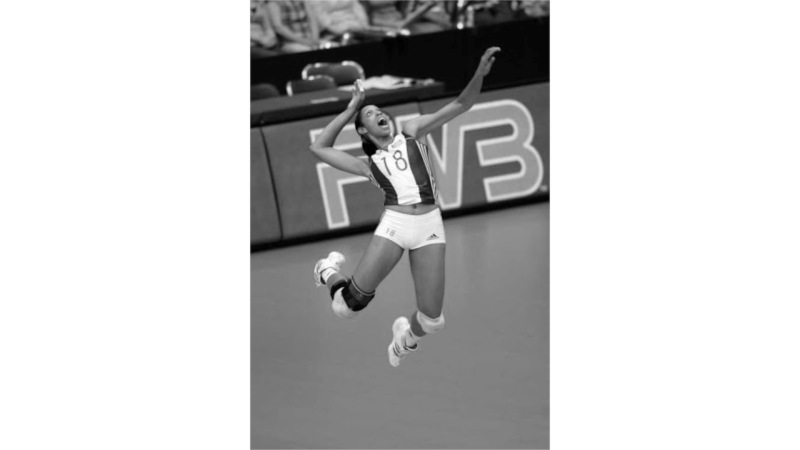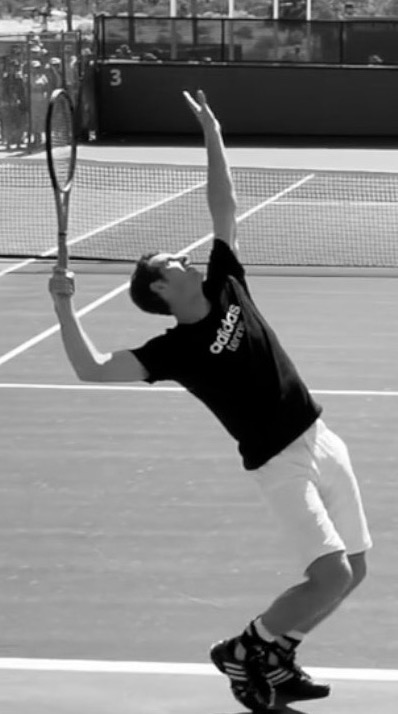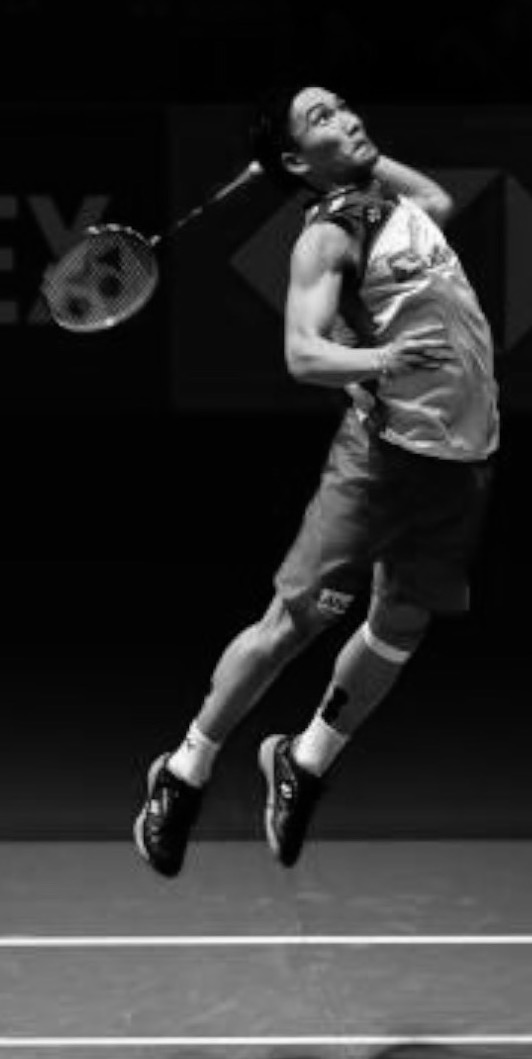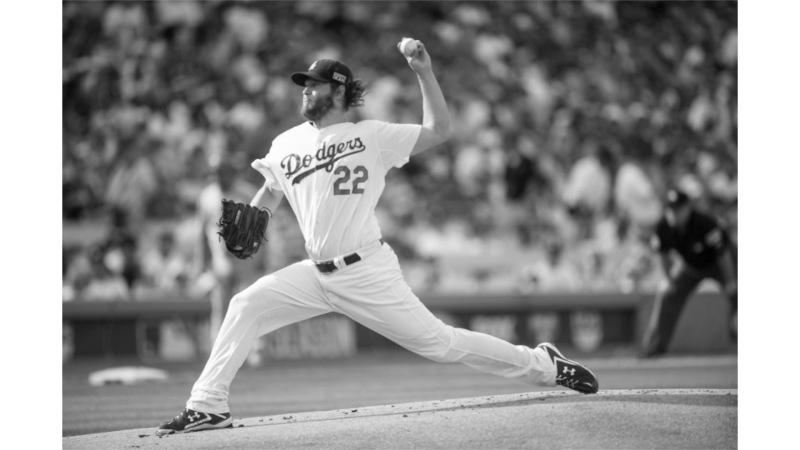Training the athletic shoulder for ballistic sports skills such as serving in tennis is not a straight forward task and endless debate amongst coaches and medical staff alike. In spite of that debate, we all agree that training the shoulder must consider how energy is generated and dissipated by the whole body via the kinetic chain. The challenge is taking that concept and turning it into an effective training intervention.
After 5 years working in tennis and what felt like a constant stream of shoulder injuries amongst 40+ athletes, this article summarises my solution to a whole-body approach to training the athletic shoulder.
SPORTS TRAINING: HIGHLY BALLISTIC SHOULDER DEMANDS OF THE SPORT ARE IMPOSSIBLE TO REPLICATE SO DON’T TRY, MANAGE PRACTICE EXPOSURE INSTEAD.

Playing any sport is the most important physical load in any performance programme. We can think up all sorts of mini med-ball or band exercises to improve strength qualities but they won’t even touch the sides in terms of demand relative to the target sports skill since throwing actions are highly ballistic actions from very provocative positions.
Sensible planning of progressive training, especially of abusive skills within that sport (e.g., serving, throwing, javelin) is one of the most reliable routes to building tolerance as well as being a critical part of getting better at the sport.




TARGET TRAINABLE MOVEMENT PRINCIPLES WHICH SEEK TO IMPROVE ENERGY TRANSFER THROUGH THE KINETIC CHAIN TO THE SHOULDER WITH SPIRAL-LINES TRAINING.

Spiral Lines training is a method I’ve developed over the years for teaching effective sequencing of the kinetic chain for rotational sports. I originally developed it to teach players how to do medicine ball training more effectively but it has developed into a key part of my programming for rotational athletes of all breeds for developing flexibility, range of motion and sequencing of the kinetic chain specific.
If you want to dive down that rabbit hole, start here
UPPER BODY STRENGTH PROGRESSIONS PRIMARILY DEVELOP A HANDFUL OF IMPORTANT COORDINATION QUALITIES & CHALLENGE WITH INTENSE LOAD, INSTABILITY OR SPEED.

Popular upper body strength exercise are chosen because of their functional relevance to athletic performance. The issue is they are frequently coached for how much weight or how many we can do, without consideration for how power is developed and dissipated at the shoulder. In overhead sports, we need the exercise techniques to promote good shoulder health and not compound the problems we see from the sport.
Overview of process for the 4 Upper Body Exercise Categories:
- Humeral head control on the glenoid fossa is the priority at a highly mobile and complex joint.
- We can’t just consider the glenohumeral joint in isolation. Position of the humeral head on the glenoid fossa is interdependent with scapula orientation and position on the rib cage.
- The way to train the skill of glenohumeral control is to first use a simple (i.e., the least complex coordination demands) exercise to let the athlete feel that position (see Horizontal Press Level 1- laying heavy dumbbell hold).
- Challenge the skill of centring the humeral head under a variety of stressors (compression vs distraction loads, horizontal vs vertical loads a.k.a Horizontal Pushing vs Pulling, Vertical Pushing vs Pulling).
- Once humeral head control is established, introduce other important scapula-thoracic drills, progressions and exercises with adaptive load (scapula upward rotation as it relates to overhead actions, scapula protraction as it relates to decelerating the arm after ball release).
- Design exercise progressions where the shoulder is acting within ever larger patterns of movement which span the body (see all upper body category progressions).
- Integrate with power development work where the shoulder-elbow-wrist act as the distal segments within the kinetic chain (see Spiral Lines exercise category).
MULTI-DRECTION TRUNK CAPACITIES & DISSOCIATIVE SKILLS TO ANCHOR DISTAL MOTION & TRANSFER FORCES THROUGH THE KINETIC CHAIN.

Trunk training in my mind needs to develop elite levels of strength endurance to create a solid and reliable anchor from which to generate a variety of forces placed on it from the lower and upper extremities. A mix of brute anti-extension and anti-lateral flexion strength is contrasted with the demands of whole-body extension and rotation developed in the Spiral Lines Category. Even the mobility of the lumbar spine in the Flexion Category is important for shoulder health in dissipating deceleration forces into the entire posterior chain during follow throughs from actions like serving, fast bowling or javelin throwing.
LOWER BODY FEEDS THE KINETIC CHAIN. HOW DO WE DEVELOP STRENGTH & POWER WITHOUT DISRUPTING SHOULDER/TRUNK QUALITIES & PROMOTE WHOLE BODY ENERGY TRANSFER?

If physical preparation for the overhead athlete is centred around developing the kinetic chain to feed the shoulder-elbow-wrist then lower body training forms provides the horsepower and is highly trainable. However, we see aggressive lower body training with little consideration for how the pelvis and lumbar spine are orientated to transfer forces toward the thorax and shoulder (think poor deadlifting techniques). Eeking out more kg’s on the bar by compromising lumbar spine posture or shoulder position to me has a net negative impact on kinetic chain output.
There’s plenty of ways to develop lower body power, how can we do that with maintenance of good posture while promoting good transfer of stiffness to pass ground reaction forces from lower to upper body with efficiency and minimal distress on the body.
SUMMARY

- The physical stress of practicing the sports skill provides the primary physical training tool.
- Underpinning that is the freedom of movement and coordination to generate rotational power through the anterior oblique sling.
- Poor prime-mover strength at the shoulder is a risk factor for injury. The challenge is, how do you build shoulder strength in a way that strengthens local stabilisers in equal measure and encourages good coordination at glenohumeral joint as it interacts with the scapula on the rib cage and how does that coordinate with the pelvis?
- Good trunk strength and skilful lumbo-pelvic control are important for transferring GRF across the pelvis and torso toward the shoulder.
- Lower body strength/ power is important for generating high ground reaction forces. Poor GRF generation puts greater stress on distal segments of the kinetic chain (i.e., abs, shoulder, elbow, wrist)


